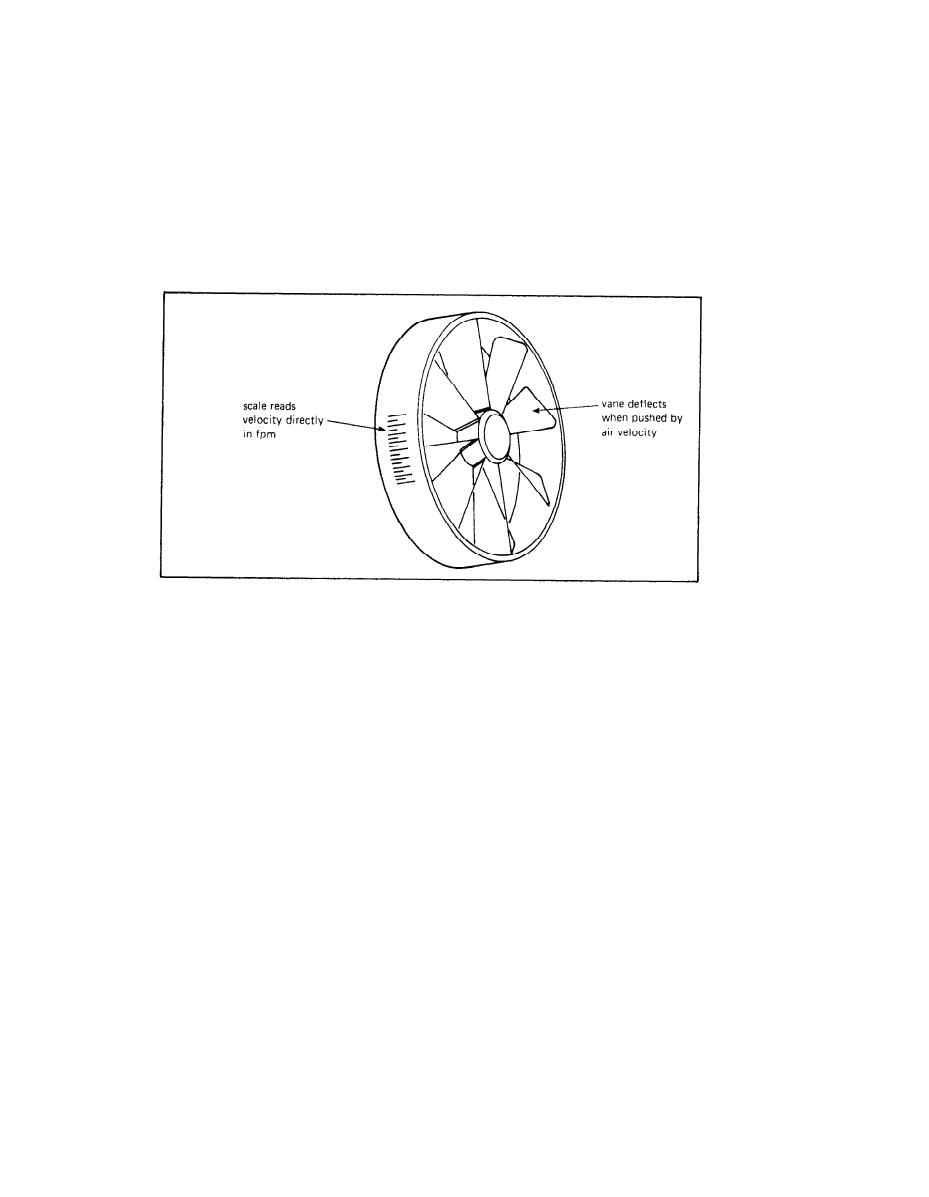

Custom Search
|
|

|
||
 2.13 DEFLECTING VANE VELOMETER. Figure 2-23 shows another velocity
measuring instrument that can be similar in appearance to the rotating vane
anemometer. The major difference is that the vane is connected to a spring
that only allows the vane to deflect rather than rotate. The deflection of
the vane is geared to a dial that reads out in fpm. The applications for
this instrument are the same as for the rotating vane.
FIGURE 2-23
Deflecting Vane Anemometer
2.14 HOT WIRE ANEMOMETER. Figure 2-24 shows an instrument with a readout
box and a remote probe. The probe has a thin wire that is exposed to the
airflow. A current is passed through the wire causing it to heat. The wire
is cooled by the velocity of the air. Electronic circuitry in the box
translates the velocity into a dial readout.
The hot wire anemometer is quite accurate, even at velocities down to 30
or 40 fpm. Also, it can be used to measure velocity inside small ducts, as
only the end of the probe needs to be inserted into a small hole in the side
of the duct. The current for the wire can be provided either by batteries
in the readout box, or from a 120-volt power source.
2-22
|
 |
|
 |
||